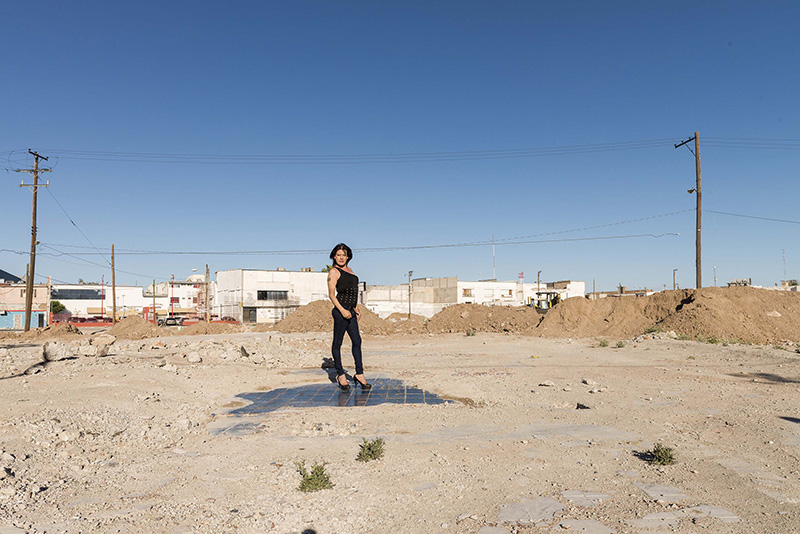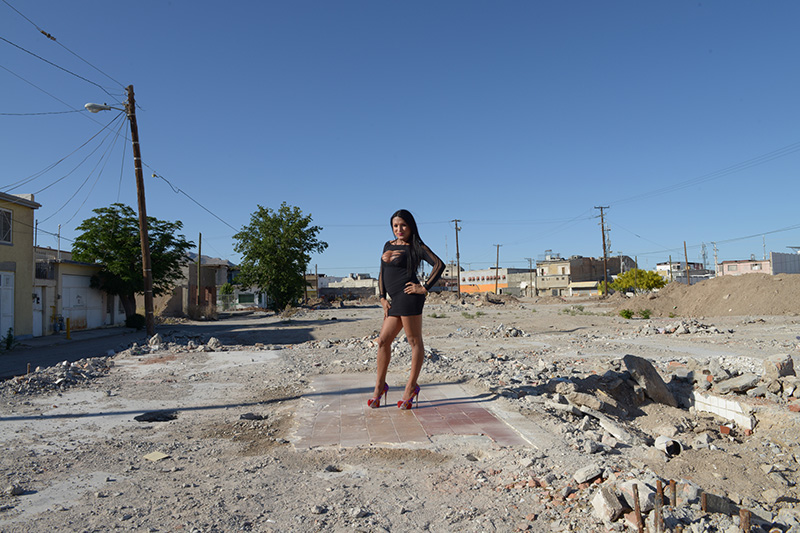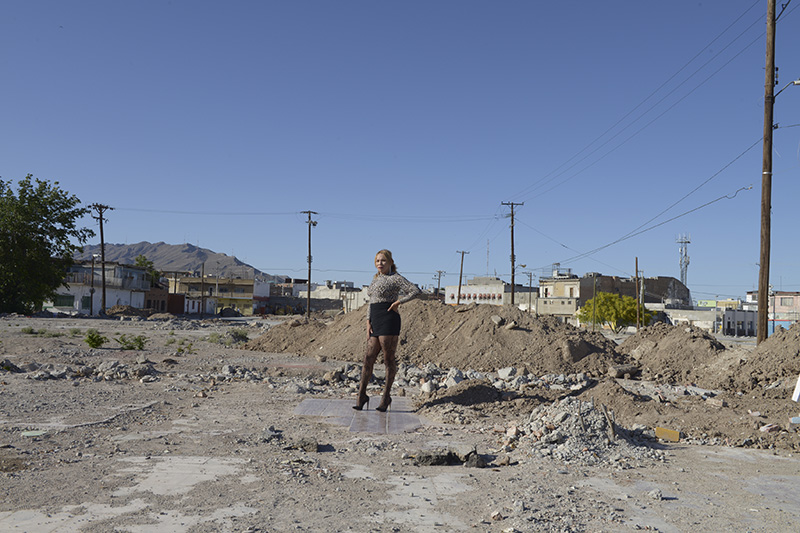ART-PRESENTATION: Teresa Margolles-Pista de Baile
 Teresa Margolles’ works examine the social causes and consequences of death. For Margolles, the morgue accurately reflects society, particularly her home area where deaths caused by drug-related crimes, poverty, political crisis and government’s brutal military response have devastated communities. She has developed a unique, restrained language in order to speak for her silenced subjects, the victims discounted as ‘collateral damage’ and nameless statistics.
Teresa Margolles’ works examine the social causes and consequences of death. For Margolles, the morgue accurately reflects society, particularly her home area where deaths caused by drug-related crimes, poverty, political crisis and government’s brutal military response have devastated communities. She has developed a unique, restrained language in order to speak for her silenced subjects, the victims discounted as ‘collateral damage’ and nameless statistics.
By Dimitris Lempesis
Photo: Galerie Peter Kilchmann Archive
In her solo exhibition “Pista de Baile”, Teresa Margolles presents a new series of photographs as well as three large sculptures made of architectural remnants taken from Ciudad Juárez. Since graduating with a diploma in forensic medicine, Margolles has examined the economics of death. Her sculptural interventions and performances often bring the physical reality and materiality of death to the fore, exemplified in her artistic intervention during the 2009 Venice Biennale in which the floor of the Mexican pavilion was mopped with water used to wash dead bodies from a morgue in Mexico. Teresa Margolles has focused her artistic practice in the last decade on the Mexican city of Ciudad Juárez, one of the most important towns along the country‘s Northern border. The city has been tragically known over the last 20 years for the brutal murders of hundreds of women, known as femicide, more recently, not only women but also other low-income residents have been characterized as disposable by the authorities, who have been trying to remove them from the city center. Ciudad Juárez has experienced several attempts to regenerate its city center since the ‘90s. The relocation of sex workers from downtown indicates a cleansing of society towards the trading of potentially valuable urban real estate, and is also linked to the violence. During the most recent phase of this process, numerous houses and establishments were either abandoned due to drug and violence-related pressures or closed down by the authorities. Many of them have been demolished, among others night clubs. In the exhibition Teresa Margolles has focused on transgender sex workers, bringing their individual stories in the spotlight. In this complex scenario, Teresa Margolles deals with material fragments of buildings, transporting them across borders and reassembling them remotely in large format sculptures, as a call to read these traces as part of larger processes, events and social relations, such as migration, international drug trade, or human trafficking. On view in the show is a fragment of the dance floor from the “Lago Blanco” night club that was extracted from the demolished site. The floor has been reassembled and displayed on the wall .Several mirrors that belonged to another night club in Ciudad Juárez form now a sculpture displayed within the gallery space, titled “Espejos de la barra del bar RUV”. Moreover, a large outdoors neon sign that reads “Mundos” has also been brought into the gallery as a sculpture. In the new series of photographs “Pistas de Baile”, each print shows a transgender sex worker standing on the remnants of dance floors from demolished night clubs in Ciudad Juárez. Their figures become part of a landscape in which ruins and devastation are the subject. Nonetheless, the proudly standing sex workers show us their best self, as if they were asserting themselves amidst both violence and destruction. This ongoing project had its continuation in Manifesta 11 in Zurich, when Teresa Margolles dealt with the brutal murder of one of the transgenders, Karla, who was beaten to death on December 2015.
Info: Galerie Peter Kilchmann, Zahnradstrasse 21, Zurich, Duration: 2/9-29/10/16, Days & Hours: Tue-Fri 10:00-18:00, Sat 11:00-17:00, www.peterkilchmann.com


